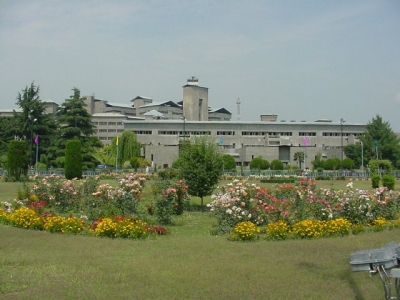Ahmad Riyaz
It roiled the Valley for over one week even threatening to push Chief Minister Omar Abdullah out of power. But the death of the ruling National Conference worker Haji Yousuf soon after being handed over into police custody by Omar himself has since been overtaken by the Valley’s deadened routine.
The conclusion is same: more things change in Valley more they remain the same. In fact, Yousuf’s death itself overtook the political clamour over the resolution for clemency for parliament attack convict Afzal Guru. The resolution which was slated to be passed in the autumn session of the assembly was aborted when Congress legislators disrupted the time meant for its discussion.
The Guru resolution in turn had itself obscured the issue of unmarked graves which riveted international attention to the human rights situation in the state. The issue also sparked a debate on the first day of the Assembly session which was capped by the CM’s speech. Omar tried hard that the blame for these killings was apportioned among a wide array of the agents of death in Kashmir: the encounters on the border during infilteration, people losing their lives in the course of arms training and killings by the militants.
Omar didn’t talk much on what Kashmiris wanted to hear: the role of the security forces, custodial deaths and the fake encounters. He, however, called on the families of the hundreds of disappeared people to get in touch with the government, give the possible address of the graves they are buried in and the government will then help in their DNA identification.
All the three issues followed one another in quick succession in a single session. But at the end of it, Kashmir is back to its predictable self where even the biggest upheavals make no difference – redeeming or otherwise. Does this tell us something really disturbing about the situation in the state? It really does. And this is that Kashmir acts abnormal even when the issues are legitimately provocative and need the government to act in a way that satisfies the consequent public outrage. Passionate public protests against a government failure generally set the government deeper in its undesirable ways. A mass sentiment finds little reflection in the official response.
One can cite any number of examples right from the unprecedented unrest of the last year which led to the killings of around 120 youth. A year after, Government has yet to affix blame, let alone take steps to punish anybody. Same is the case with the issue of unmarked graves. True, it is the government’s own body that has confirmed the existence of these graves but the CM has responded to the revelations by putting the onus of identifying the buried on the families of disappeared persons. There is no effort to trawl the records of the security agencies to unravel the truth, atleast in a certain percentage of these graves.
The resolution on Guru has been a mess. Despite being an issue that resonates with a large section of the population of the state, the ruling National Conference didn’t think it was worth a discussion in the house and let its coalition partner stall it. And to cap it all, government is yet to convincingly act on the alleged custodial death of the NC worker Yousuf. An issue that had the potential to unhinge the government has fizzled out in a way as if nothing has happened.















